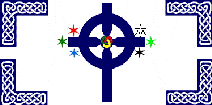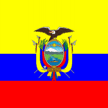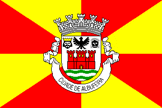- CARBUNCLE
-
See ‘escarbuncle’.

(Parker and CS)
- CARNATION
- See shades of tincture in Appendix III.

- CAR FLAG (or PENNANT)
- 1) Specifically a flag or pennant, sometimes in metal or other non-flexible material, designed specifically
to be flown from a car an automobile or vehicular flag.
2) Generically the term may include any flag that is flown from a motor vehicle (see also fanion 2)).



Car Flag, Regional President and Ministers, Catalonia, Spain (fotw; Car Flag, Ministers and State Secretaries, Bavaria Germany (fotw); Car Pennant, General officer, Germany 1941 45 (fotw)
Notes
a) With regard to 1), the practice of flying a car flag or pennant was
previously (usually but not exclusively) limited to that carrying a head of state,
government official or military officer. Whilst these were formerly sometimes flown from
the radiator cap, a car flag is now more usually seen on the right front fender,
wing/mudguard (or often on both front fenders) but there is a suggestion that the two
positions might also previously have indicated differences in the rank of the occupant.
b) With regard to 2), the practice has arisen whereby such flags are available
as sports flags or may also be displayed by a funeral cortege, and that the former are
usually flown from a clip-on, window mounted staff, or from the radio antenna (see also
funeral flags, sports
flag 1) and sports flag 2) ).
- CARROCERUM (CARROCIUM or CARROCIUS)
- An alternative medieval term, now obsolete, for the cart upon which the standard
was placed (see also altema,
gajardus and
standard 6)).
- CARTEL FLAG
- In obsolete UK, US and some other usage, a flag or one of a pair of flags, that
mark a vessel involved in the exchange of prisoners (see also
flag of truce).
Please note, an agreement between the United States and Great Britain in 1813 laid down
that the cartel vessels of each country should wear their respective national ensigns at
the stern, that both should wear a plain white flag at the fore whilst each should carry
their opponents ensign at the main, and evidence suggests that this was a confirmation of
contemporary (that is early-19th Century) practice (see also fore and main).
![[cartel flags]](../images/v/vxt-d1374.gif)
Flags of a British Cartel Vessel Vessel during the War of 1812 (CS & fotw)
- CARTOUCHE
- 1) In heraldry, an oval escutcheon often used (but not exclusively so) by Italian clergymen (see also
escutcheon).
- 2) On flags as above, and a term that now covers a usually (but not invariably)
oval plaque or frame, generally containing heraldic insignia, and occasionally a date or
motto (see also motto and
ring).
![[cartouche]](../images/v/vxt-d069.gif)
![[cartouche]](../images/v/vxt-d069a.gif)
![[cartouche]](../images/v/vxt-d069b.gif)
From left: Detail, Spain (CS); A Flag for Generals at Sea 1649 - 1653, England (CS);
Andorra (fotw)
- CASE(D)
- 1) A narrow sleeve-like sack, usually of some decorative, waterproof, material
used in order to protect a regimental, unit, service or national colour (or
occasionally a parade flag) when outdoors
and furled (see also colour 2)
flag case 2), and
furl(ed) and parade flag 2)).
- 2) (v) The act of placing the furled colour or parade flag into its case
(see also lodging and uncase(d)).
- (3) (adj) The term used when that colour or parade flag has been placed into its
case, and/or when it is so carried.
- CASKET FLAG
- See pall flag.

(flagstuff.com)
- CASTING THE COLOURS
- See flag tossing.
- CATERFOIL
- See quatrefoil 2).

Flag of Hottingen, Switzerland (fotw)
- CAVALIER (or CAVALIERS) CROSS
- See cross pattιe in appendix VIII.

Flag of Poltava, Ukraine (fotw)
- CELTIC CROSS
- The term for a cross used by the ancient Celtic church (and now by a number of neo-nazi
movements) that does not usually reach the edges of a shield, canton, panel or flag, but which
is displayed with a ring or annulet crossing all four arms - but see
sun cross (also
cross 2) and
ring 1)).



Stiωbhart's Pan-Celtic flag, UK (fotw); Flag of the Church
in Wales (fotw); Flag of the Ultra-Nationalist Movement, France (fotw)
- CENDAL
- See sendal.
- CENDRÉE
- See shades of tincture in Appendix III.

- CENTRAL SPAN
- The central line upon which signal flags are displayed when a vessel is
dressed overall - see dressing lines,
dress ship, to 1) and
dress ship, to 4).
- CENTRED (or CENTERED)
- The term used when a charge is set in the geometric or visual centre of a flag or the panel
it occupies see visual centre (also
inset,
off-set towards and
off-centred).
- CENTRED (CENTERED or CENTRED/CENTERED UPRIGHT) CROSS
- See cross 1) (also centred above).

Flag of Zwolle, The Netherlands (fotw)
- CEREMONIAL ENSIGN
- An ensign flown by naval ships and over naval or military establishments
on Sundays or days of national or service celebration (see also
Sunday ensign
and garrison flag).
Please note that this term does not refer to flags
used on parade or those made for indoor display, but to flags and ensigns that are
identical with their everyday equivalents except for size and/or care of manufacture
(see also parade flag
and indoor flag).
- CEREMONIAL FLAG (or BANNER)
- 1) In largely (but not exclusively) East, Central and South European usage, a term employed to describe those national or sub-national flags that
are for parade use or display on occasions of local or military significance, and which are often a gonfalon or a more elaborate form
of the normal flag a festive banner or flag (see also
banner 4),
gonfalon,
official flag 2),
state service flag,
paradeflag 1) and
sub-national flag).
- 2) See ceremonial standard below.






National Flag and Ceremonial Banner of Ecuador (fotw); Flag and Ceremonial Flag of Malopolska, Poland (fotw); Flag and Ceremonial Flag of
Albufeira, Portugal (fotw and
Portuguese Wikipedia)
Notes
a) With regard to 1), not to be confused with a flag of ceremony (the Spanish bandera
de ceremonia) which is designed for exclusively indoor use see
indoor flag.
b) With regard to 1), that in East and Central European usage
the ceremonial flag of a community is often created as a unique flag see
unique flag.
- CEREMONIAL STANDARD
- A term for the standard, or flag, flown on royal ceremonial occasions in (as far as
can be discovered) Kelantan, Malaysia in place of the individual standards of any royal
family member present (see also
royal standard 1),
royal standard 2) and
standard 1)).
![[ceremonial standard]](../images/v/vxt-d565.gif)
Ceremonial Standard of Kelantan, Malaysia (fotw)
- CEREMONIAL STATE ENSIGN
- A term for the ensign, possibly obsolete, flown (in place of a standard state ensign) on
ceremonial state occasions by government entities at sea (see also
government ensign under
ensign).
Please note that, as far as can be discovered, Johore, Malaysia
is the only country which may currently still use such a flag.
![[ceremonial ensign]](../images/v/vxt-d566.gif)
Ceremonial State Ensign, Johore, Malaysia (fotw)
- CEREMONY OF COLOURS (or COLORS)
- See colours 5)
![[ceremony of colours]](../images/v/vxt-d2196.gif)
Naval Ensign, South Africa (fotw)
- CEREMONY OF CONSECRATION
- See consecration.



![[cartel flags]](../images/v/vxt-d1374.gif)
![[cartouche]](../images/v/vxt-d069.gif)
![[cartouche]](../images/v/vxt-d069a.gif)
![[cartouche]](../images/v/vxt-d069b.gif)












![[ceremonial ensign]](../images/v/vxt-d566.gif)
![[ceremony of colours]](../images/v/vxt-d2196.gif)





![[ceremonial standard]](../images/v/vxt-d565.gif)